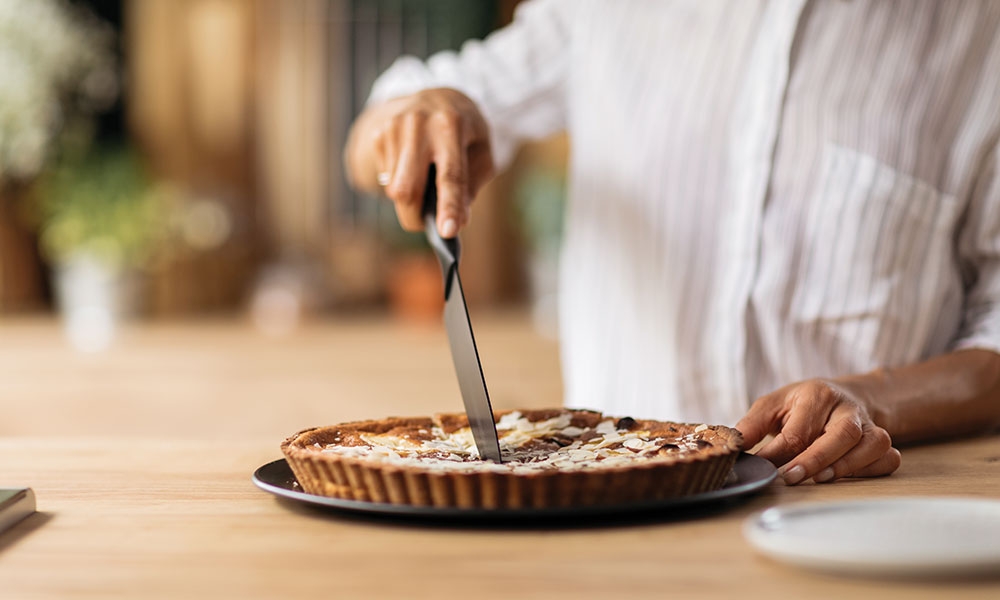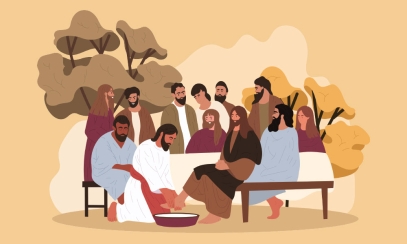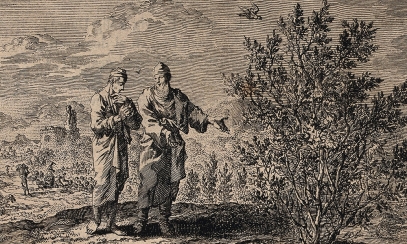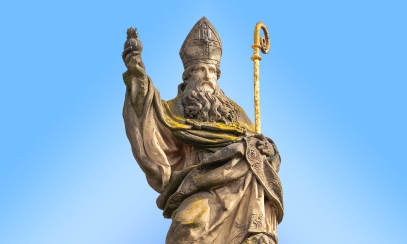
Temperance & Gluttony
Last month, we began considering ways to grow in virtue. By cultivating virtue, we become more capable of overcoming the roadblocks that trip us up along the path to God. Virtue also makes us more like God and more fit for union with him. This month, we’ll discuss how the virtue of temperance can help us overcome the “deadly” (so-called because it gives rise to other vices) sin of gluttony.
According to the Catechism, temperance (also known as moderation, self-control or sobriety) “is the moral virtue that moderates the attraction of pleasures and provides balance in the use of created goods.” (1809) Through temperance, our will maintains control over our instincts and we can limit our desires to what is honorable. However, at times, the exercise of temperance can seem difficult.
Last month, we began considering ways to grow in virtue. By cultivating virtue, we become more capable of overcoming the roadblocks that trip us up along the path to God. Virtue also makes us more like God and more fit for union with him. This month, we’ll discuss how the virtue of temperance can help us overcome the “deadly” (so-called because it gives rise to other vices) sin of gluttony.
According to the Catechism, temperance (also known as moderation, self-control or sobriety) “is the moral virtue that moderates the attraction of pleasures and provides balance in the use of created goods.” (1809) Through temperance, our will maintains control over our instincts and we can limit our desires to what is honorable. However, at times, the exercise of temperance can seem difficult.
An unbalancing act
As human beings, we naturally enjoy the pleasures of food and drink, and the use of created goods, which is not in and of itself, sinful. The problem arises when we have an “inordinate desire” for them, as St. Thomas Aquinas says. In the face of fear, emptiness, pain, stress and all-around unpleasantness, temperance can give way to an exaggerated desire for pleasure and a disordered use of created goods. One manifestation of this desire is the vice of gluttony. Derived from the Latin meaning to gulp down or swallow, gluttony is best described as over-indulgence and over-consumption.
We are likely very familiar with gluttony as it relates to the use of food or drink. To eat or drink too much (i.e., more than we need), is to fall into gluttony. Gluttony indicates an excessive desire for food and drink, but it also involves a self-centeredness that all too easily forgets about the existence of God and neighbor.
In addition, there is a subtler form of gluttony. To eat or drink exclusively for the mere pleasure of the experience can also be gluttonous. This is the case because it can indicate an unhealthy attachment on our part to pleasure and self-gratification.
The dangers
One danger associated with gluttony is our tendency to try to fill a “lack” we perceive in ourselves or to prolong a pleasurable experience on our own. When we do so, we forget that God is the one who gives us our daily bread – that is, whatever is truly best for our souls – and that he alone can fulfill our deepest desires. St. John of the Cross teaches we “lose true devotion and spirit, which lie in distrust of self and in humble and patient perseverance so as to please God.”
Perhaps the greater danger of gluttony in all its forms is that it breeds an aversion to the very condition of Christian discipleship – that we take up our cross and follow Christ. Instead of making us more like Christ, gluttony moves us in the opposite direction.
St. John indicated that those who are inclined to gluttony “are weak and remiss in treading the rough way of the cross. A soul given up to pleasure naturally feels aversion toward the bitterness of self-denial.” In other words, gluttony is deadly because overindulgence and overconsumption foster an egotism that stands in stark contrast to that poverty of spirit that Jesus calls us to live.
Tempering the will
Overcoming any vice requires prayer for God’s help and hard work on our part to cultivate the opposing virtue. To overcome gluttony, the virtue we need to practice is temperance.
How do we grow in temperance? One way is through asceticism. Asceticism means “polishing” or “a smoothing or refining.” It was used by the ancient Greeks to describe exercise or training in the sense of athletic training.
Essentially, asceticism consists in saying “no” to my lesser desires so that I can say “yes” to God. It consists of spiritual exercises aimed at bringing about greater freedom – such as freedom from compulsions and temptations, and greater peacefulness in one’s life. One effective form of asceticism is fasting – for example, skipping a meal, or going radio-silent in the car.
It is important to note that asceticism is not an end in and of itself. Ascetic practices such as prayer, fasting and almsgiving simply make the mind and body more conducive to spiritual transformation, much in the same way that training enables an athlete to perform better during a competition.
Through training and exercise, dormant powers in both the body and mind are developed so that both may attain their full natural beauty. Likewise, through God’s grace, repentance for sin, purifying one’s heart and mind and cultivating virtues, we prepare for that fullness of life that is an encounter with the Father, Son, and Holy Spirit.
The ‘art’ of temperance
Icons are stylized religious images – often depicting Jesus, Mary, angels or saints – used in prayer and worship. Over the centuries, Eastern Christians have developed a profound understanding of the icon as a window into heavenly things. To honor the icon is not to honor a painted wood panel, but to honor the personage(s) depicted on the panel.
Because of its sacredness, icon painting is also a deeply spiritual, ascetic process. Traditional iconographers pray before, during and after their work; they practice temperance by fasting; and they go to confession. By their asceticism, iconographers make themselves more receptive to the movements of the Holy Spirit. They hand the paintbrush to God, so to speak, who creates beautiful images through which others can have a true encounter with him and his saints.
Let us all take a cue from iconographers and, by our prayer and fasting, invite the Divine Artist to transfigure our lives.
Doug Culp is the chancellor for the Catholic Diocese of Lexington.



